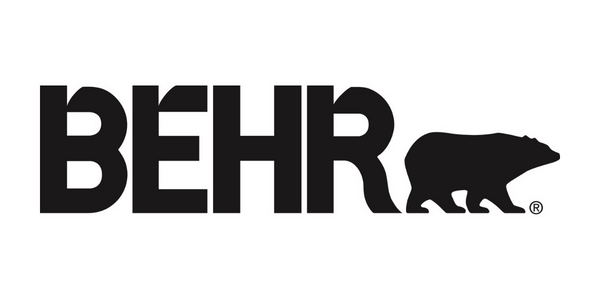PCA Articles

How to Estimate and Bid a Paint Job | BEHR PRO
To thrive in today’s competitive paint market, many paint contractors recognize that success depends on more than a paint job, itself. It’s also important to have a wide array of vital business and industry skills, including client communication, time management, and understanding paint colors and design trends. And topping the list — effective estimating and bidding.
Why are estimates and bids valuable? Well, providing clients a detailed, custom account of all job-related costs, it positions you as a true professional. Sure, it takes some time and effort but presenting a comprehensive and well-organized plan can not only give you a leg up on the competition, but also increase your reputation as a trustworthy professional. Even better, it helps ensure that you make a profit!
If developing your own estimates and bids feels a bit overwhelming, never fear! Behr Paint Company experts have compiled step-by-step guidelines to make this process more manageable and, over time, become a natural step in contracting a job.
Estimating
Before you start estimating, it’s important to calculate how much it will cost you to take on a project.
The formula for estimating is as follows:
Material Costs + Labor Costs + Overhead Costs = Total Project Cost
Materials
First, list and price any products and tools you need for a job — including primer, paint, applicators, patching material, caulk, painters’ tape, sandpaper, drop cloths, plastic sheeting, and personal protective equipment, etc. Then, at each job, continue compiling your supplies list. Remember that every project is unique; therefore, this list will expand and contract as needed — yet it should be organized, flexible and easy to customize. Be sure to include your recommendations for the to be used in each area to be painted, as well as the total square footage.
For larger projects, consider reaching out to your BEHR PRO Rep to help specify the scope of work with an appropriate warranty that protects you and your customer and manages expectations.
Measure the Area
When calculating how much paint you need, it’s tempting to save time and eyeball the space. If you’re spot-on — great! If you underestimate, you may waste precious time (and money). With that in mind and if your schedule allows, don’t rush this step. Why? Well, while you’re taking measurements onsite, perhaps initiate a conversation with your client to learn more about their vision and expectations.
Labor
As mentioned earlier, all paint projects differ, and many factors must be considered; therefore, labor costs will fluctuate. Begin by identifying each “stage” of a job (for example: preparation, paint application, quality control, and clean-up). Then, list smaller tasks, determine the costs per hour, and assign them to one of the stages. Be sure to include anything that may extend painting time: Is the job interior or exterior? How many crew members do you need? Do you have to move furniture? Wall repairs? Multiple colors? Do you have to come back the next day because the first coat didn’t dry in time to apply the second coat? All are important considerations when calculating labor.
Also, be prepared to add or subtract labor charges. For example, some clients know exactly what they want. In fact, they may have already picked their colors and sheen, as well as purchased the paint. On the other hand, other clients may only have a vague idea. Clients like these need your professional guidance — and Behr is here to support you with our professional color tools and services.
Make certain you include your hourly rate in the estimate for this extra service — accounting for time spent looking at paint chips, explaining the types of paint and their respective quality levels and costs, and taking more than one trip to the store to pick up paint samples. Chances are, you’ll have to adjust your estimate but the more accurate you are, the smoother and more profitable the job.
Overhead
Overhead consists of the actual, ongoing cost of doing business, including gas, vehicle maintenance, reusable tools and equipment, administrative support, facility expenses, marketing, and business insurance. These expenditures tend to be consistent, although others — such as utilities — can vary month to month.
Overhead costs will help you determine a job’s profitability. While they aren’t billed directly to clients, contractors may fold these costs in to boost revenue, reduce overhead costs to save money — or a combination of both! If you need to more information about calculating overhead, find out more here.
Bidding
Now that you have the estimating information you need, it’s time to create a winning bid that puts money in the bank!
The formula for determining your bid: Total Project Cost + Markup = Total Estimate
Keep in mind that the goal of the bidding process is to ensure your client pays a reasonable price for a complete, professional project without any “surprises” — and, of course, securing you a fair profit. It can be tricky: Here’s why:
You don’t want to bid too high, as a competitor could come in low and nab the project. At the same time, don’t sell yourself short. You’re a knowledgeable professional painter providing a valuable service — so bidding too low could lose you money on the project.
So, what do you do when competitors present a low bid you can’t match?
- Highlight your strengths that make you a trusted professional — such as years in business; your and your crew’s level of training and experience; affiliation with industry organizations, professional certifications, proof of licensing and bonding, as well as positive client testimonials/client referrals (even better if clients are willing to be contacted). Providing information clients care about makes them feel at ease in choosing you for the job and boosts their confidence in you.
- Present your bid in person, not via e-mail. Few things make a better impression than taking the time to physically deliver your bid. It allows you to have a face-to-face discussion with your client about the bid. Ask how they feel about it and see if you can secure the job in person. In addition, it tells your client that you are invested and that you care about them and their painting needs — something an email may not fully convey.
- Smart follow-up — Following the bid, paint professionals typically contact a prospect a week or so later. Yet, if there’s no response, they simply move on. Don’t be discouraged if jobs don’t fall into your lap. Reality is that — when it comes to more dramatic renovations — homeowners need more time (sometimes a year or more) to move forward. Therefore, consider touching base with those clients (via their preferred platform) every six months or so. You may find out that they’re ready to move forward with their project.
Fine Details
To craft a truly professional bid, consider creating a Scope of Work. This comprehensive document addresses all project details and a timeframe to start and complete the job, ensuring everyone involved is on the same page. Items to include:
- Materials – All paint types, colors and sheens, etc.
- Labor – Scheduled hours/days, number of workers, allowance for inclement weather/other foreseeable delays.
- Client responsibilities – Jobsite preparation, availability, open communication, approvals, payment.
- Deliverables – Complete list of every interior and/or exterior space to be painted, including walls, accents, windows, doors, trim, and other architectural elements. It’s also important to note exclusions, i.e., areas/surfaces not to be painted.
- Additional information – Address any other important terms and conditions that all parties should clearly understand
Putting a bid together may feel tedious but following the proper steps can result in a smooth, tension-free process. Keep in mind bids are typically valid for 90 days and will need to be reassessed thereafter to account for inflation and other factors. Whether the job is large or small, residential or commercial, implementing this process gets easier and, over time, you’ll start to see the payoff!
For more information or questions on estimating and bidding, please contact your BEHR PRO Rep.
